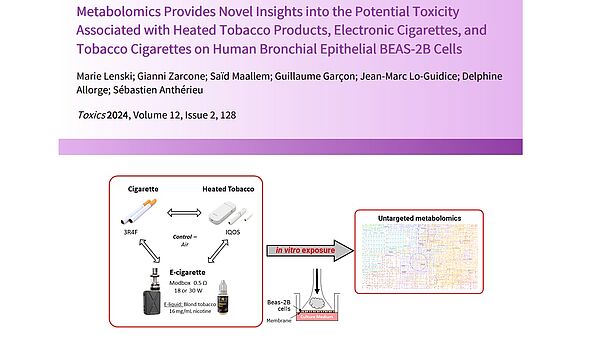
Sébastien Anthérieu
- UFR DES SCIENCES DE SANTE ET DU SPORT
- FACULTE DE PHARMACIE
Présentation
Professeur de toxicologie à l'Université de Lille et membre de l'Unité Labellisée de Recherche ULR4483-IMPECS « IMPacts de l’Environnement Chimique sur la Santé » (UFR3S : Département de Pharmacie et Département de Médecine).
Le programme scientifique de l’équipe a pour objectif de mieux comprendre la complexité réactionnelle des tissus exposés aux composés chimiques présents dans l‘air que nous respirons, d’expliquer les inégalités des individus vis à vis de ces substances, de mieux connaitre les niveaux de risque et, par conséquent, de mieux prévoir et mieux prévenir l’impact de cet environnement sur la santé respiratoire.
Globalement, le projet du laboratoire contribue à répondre à deux défis majeurs : (1) d’une part, l’identification, à l’aide de modèles expérimentaux in vivo et in vitro innovants, des marqueurs précoces d’exposition ou d’effets des aérocontaminants, ainsi que des facteurs de susceptibilité à ces substances ou de prédisposition à des maladies respiratoires environnementales; (2) d’autre part, l’évaluation de la pertinence de ces biomarqueurs dans des populations humaines (population générale, sujets exposés dans un contexte professionnel, patients présentant une pathologie broncho-pulmonaire chronique ou cancéreuse).
Dernières actualités

Abstract: Smoking is an established risk factor for various pathologies including lung cancer. Electronic cigarettes (e-cigs) and heated tobacco products (HTPs) have appeared on the market in recent years, but their safety or, conversely, their toxicity has not yet been demonstrated. This study aimed to compare the metabolome of human lung epithelial cells exposed to emissions of e-cigs, HTPs, or 3R4F cigarettes in order to highlight potential early markers of toxicity. BEAS-2B cells were cultured at the air–liquid interface and exposed to short-term emissions from e-cigs set up at low or medium power, HTPs, or 3R4F cigarettes. Untargeted metabolomic analyses were performed using liquid chromatography coupled with mass spectrometry. Compared to unexposed cells, both 3R4F cigarette and HTP emissions affected the profiles of exogenous compounds, one of which is carcinogenic, as well as those of endogenous metabolites from various pathways including oxidative stress, energy metabolism, and lipid metabolism. However, these effects were observed at lower doses for cigarettes (2 and 4 puffs) than for HTPs (60 and 120 puffs). No difference was observed after e-cig exposure, regardless of the power conditions. These results suggest a lower acute toxicity of e-cig emissions compared to cigarettes and HTPs in BEAS-2B cells. The pathways deregulated by HTP emissions are also described to be altered in respiratory diseases, emphasizing that the toxicity of HTPs should not be underestimated.
Keywords: heat-not-burn products; e-cigarette; lung; metabolites; mass spectrometry



